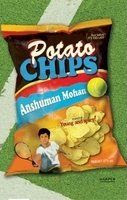Teenagers and Publishing Deals

Via Outlook India
If you still think Potato Chips is comfort food for overweight teens, it’s obviously been a while since you legged it to a bookstore. Because there, sitting neatly on a shelf, you will find it—the latest addition to a rising pile of books penned by teenagers and snapped up by publishers to fill the gap between Enid Blyton and Sidney Sheldon.But before you bookmark it as kiddie fiction, Anshuman Mohan, the articulate 15-year-old wr
iter of Potato Chips (completed when he was 13, and published by HarperCollins this year), will have you know that he, for one, “would rather not publish my book than have it stacked in the kids’ section alone. I see it this way: my book is written by a kid to an adult”. His ambition is shared by most young storytellers, including Shival Gupta, who has felt published-author goosebumps twice over with Discovery of the Swordcase, a fantasy novel, and “romantic comedy” Where Edges Meet, out in 2009. “I don’t want to connect only with teenagers,” asserts the 12th-grader, whose tryst with novel-writing has been cut short by IIT-JEE preparations in Kota.
As more teen writers script success stories, some of India’s best-loved children’s authors feel it could open a new chapter for the genre. Says Ruskin Bond, who indulgently reads poems, novellas and everything in between brought to him by his little fans: “In the last five years, there has been a sudden upsurge in children who want to write. Earlier, it was just the school magazine, and a handful of students would take up writing later. Now, everyone wants to be published! Maybe there is a certain glamour about it now, with writers gaining prominence in the visual media.” Adds children’s author Subhadra Sengupta, also one of the organisers of children’s litfest Bookaroo that took off in 2008, “Nowadays, children’s books are selling very well and publishers have woken up to this huge untapped market. Ten years ago, most publishing houses didn’t even have a children’s editor. The scenario’s different now.”
While the publishing industry hasn’t quite turned over a new leaf yet, all of this may be incentive enough for children to type out that formidable first sentence. But where does the gumption to actually send drafts to potential publishers, instead of tucking them away into some chaotic desk drawer, come from? Pradipta Sarkar of HarperCollins, who worked with two teen writers (Anshuman and Trisha Ray) for the house’s Young Adult range, offers: “Youngsters these days are surer of themselves, tech-savvy, net-savvy, world-savvy. They also have diverse and exciting lives, and much more to say than, say, a teen 15 years ago.”
Sudeshna Shome Ghosh, editorial director, Puffin, adds parental encouragement to the mix.
What the newbies on the block readily acknowledge is that changes suggested by editors work well, and no, there isn’t any bullying. But if they expect their baby fat to see them through loose writing, they have another think coming. Himanjali Sankar, editor of Scholastic India that brings out an annual compendium of pieces by budding authors called For Kids By Kids, states, “The same stringent standards of quality, style and language that we expect from adult authors are expected from younger ones.” By the same logic, as Dibakar Ghosh, senior commissioning editor, Penguin Books India, reveals, the royalty arrangement with Rohini “is on par with other first-time authors”. Trisha Ray, who keyed in 85,000 words for her “kickass action thriller” The Girls Behind the Gunfire, too is happy with her “incredibly generous advance”.
Read the entire article here.








